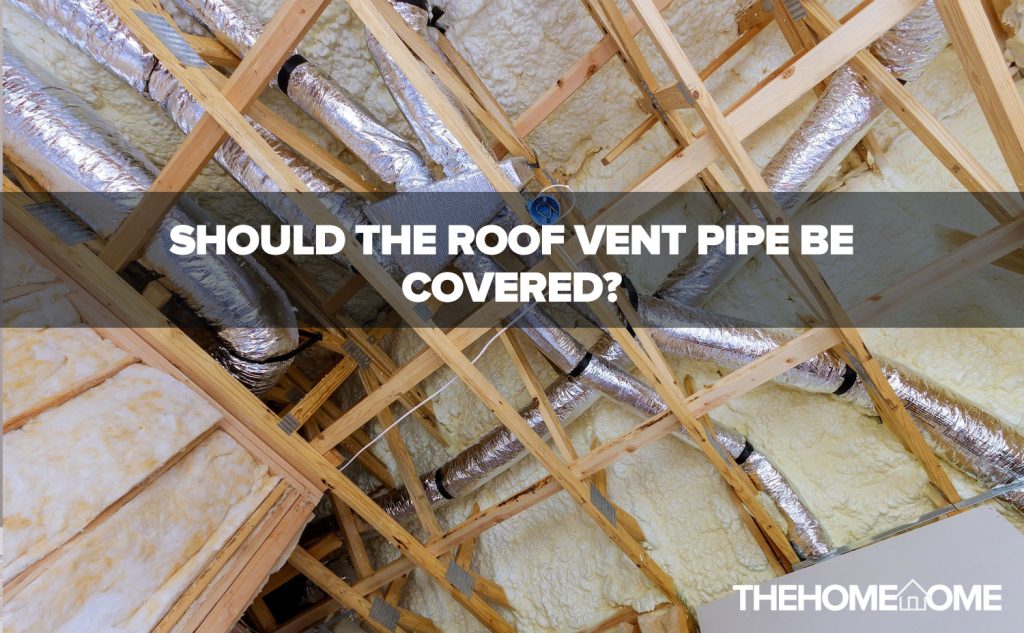A roof vent pipe is also known as a vent stack or plumbing air vent, and it’s important to check out this part of the house when doing repairs. However, for an effective roof inspection, there are a couple of things you need to know that will be discussed in this blog.
The roof vent pipe is meant to regular the plumbing system in your home hence it needs regular maintenance to work properly. Being prepared and knowing what to look for concerning roof vent pipes, especially after summer is very crucial since.
QUICK ANSWER: Yes, your roof vent needs to be covered to reduce noise generation and keep debris out. However, you should keep it open during winter and this is because it works to keep temperatures evenly distributed thereby allowing moisture to leave the attic space thereby leaving it warm and dry. Other than that, putting a cap on your vent pipes is to protect them from debris during a storm or prevent animals from getting it.
The process of installing a roof vent pipe to prevent the buildup of smoke or other smoke points has been around since 1800. For several years, it has been increasingly popular as part of the building’s drainage system which is also why understanding how it works is essential.
Vent pipes are invented to supply fresh air to each of the plumbing fixtures in the house, it regulates the air in your plumbing system however not many understand how roof vent pipe works when it comes to household plumbing systems.
Read on to learn more about roof vent pipes and if they should be covered or not.
What Is A Roof Vent Pipe And Its Benefits?
A roof vent pipe is installed to regulate airflow, and it works alongside your drain pipes except this does not carry water, it only allows water and waste to flow out of your home and into the sewer system.
Lots of issues can manifest from your drain, sink, and toilets if the vent pipe is clogged hence it’s essential to take proper care of it.
Also, it prevents a vacuum that causes slow or no drainage as well. The roof vent pipe can also save you a lot of money as it helps reduce the potential for water damage however pipe flashing has to be installed for this.
Roof venting plays a vital role in your plumbing system, so it shouldn’t be neglected. The plumbing vent can also be clogged so understanding it is crucial, diagnosing it means checking more than just the water pipes so if you encounter any issue with it, it is recommended to contact the plumbing service.
Should The Roof Vent Pipe Be Covered?
The roof vent pipe has to be covered to prevent leaks, and keep dirt and pests out. As stated earlier, roof vent pipe often works to regulate temperature evenly during winter, so you can keep them open during the winter months, this will prevent moisture from getting trapped in your attic.
Keep your vent pipe covered up in cold weather especially if it has not been installed properly.
A roof vent pipe that has not been installed to keep dirt and pests out needs to be covered, so there is no definite answer to whether you should cover your roof vent pipe or not.
There are different types of vents, but the most common type of roof is called a true vent and to keep debris from entering in, consider covering it during a storm.
In conclusion, we recommend putting a cap on your roof vent pipe and this is because keeping the vent pipe open has been discovered to expose it to elements that can cause it to break down or harm the rest of the plumbing system. So, while you should definitely keep it open during winter, cover it for the rest of the season.
Should I Cover My Roof Vent In Winter?
This is one part of the year you should definitely leave your roof vent open.
It is not necessary to close your roof vent during the cold part of the year except there is a storm. Proper ventilation during winter is vital as well and moisture is likely to rise during winter in your attic and if it becomes trapped, it can cause mold and mildew to form.
The reason most people cover their vents in winter is to prevent heat loss in their home, but it’s best to have your attic insulated, this will stop the heat from escaping from the house even if it does from the attic.
There are different types of roof vent pipe that can be installed but no matter which one you have, leave it open in winter and colder climates.
Wrapping Up
The weather is going to have a significant influence on whether you should keep your roof vent open or not.
Roof ventilation is very important all year round and if your vent pipe is not in good condition or gets clogged, it will have an impact on the plumbing system in your house.
The first step to countering any issue with plumbing is to ensure you have a good roof vent pipe installed and also choose a good quality cover for it. Covering roof vents can help safeguard against weather inclement and ensures durability as well.

